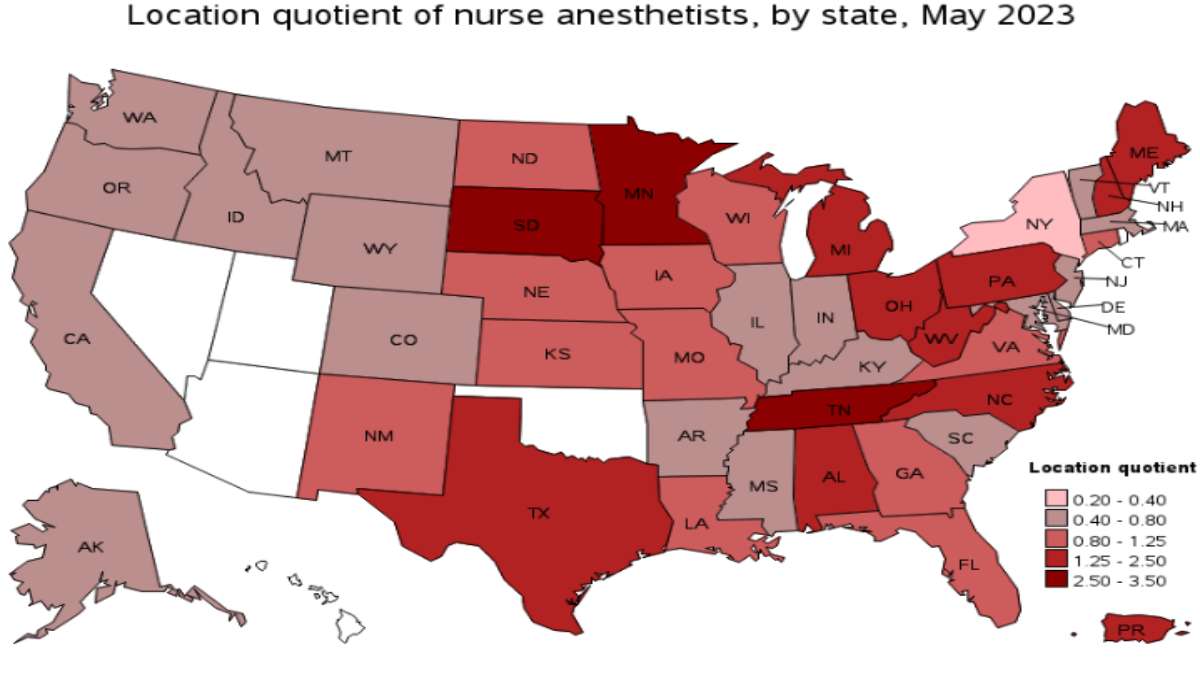Certified Registered Nurse Anesthetists (CRNAs) play a pivotal role in the U.S. healthcare system, particularly in anesthesia care. As of 2025, the number of CRNAs and their impact on the healthcare workforce are subjects of significant interest. This article delves into the current statistics, projected growth, and the essential functions of CRNAs across various healthcare settings.
Introduction
CRNAs are advanced practice registered nurses specializing in anesthesia care. They are integral to the delivery of anesthesia in diverse medical environments, from hospitals to outpatient clinics. Understanding the current landscape of CRNA employment and their projected growth is crucial for healthcare professionals, policymakers, and educational institutions.
Current Number of CRNAs in the United States
As of 2025, the United States is home to approximately 65,745 active CRNAs. These professionals are employed in various healthcare settings, including hospitals, outpatient care centers, and specialty clinics. The distribution of CRNAs varies across states, with some regions experiencing higher concentrations due to local healthcare needs and educational opportunities.
Projected Growth in CRNA Employment
The demand for CRNAs is expected to rise significantly in the coming years. The U.S. Bureau of Labor Statistics projects a 38% growth in CRNA employment between 2022 and 2032, a rate much faster than the average for other professions. This growth is driven by several factors:
-
Increased surgical procedures: An aging population and advancements in medical technology are leading to more surgeries, thereby increasing the need for anesthesia providers.
-
Expansion of outpatient facilities: The rise of outpatient surgery centers has created additional demand for CRNAs in non-hospital settings.
-
Shortage of physician anesthesiologists: With a declining number of physician anesthesiologists, CRNAs are stepping in to fill critical roles, especially in underserved areas.
Role of CRNAs in Healthcare Delivery
CRNAs are responsible for administering anesthesia and providing anesthesia care across a range of medical procedures. Their duties include:
-
Preoperative assessment: Evaluating patients’ medical histories and planning anesthesia care.
-
Intraoperative management: Administering anesthetics and monitoring patients during surgery.
-
Postoperative care: Overseeing patients’ recovery from anesthesia and managing any complications.
In rural and underserved communities, CRNAs often serve as the sole anesthesia providers, ensuring access to essential surgical and pain management services.
Educational Pathways to Becoming a CRNA
Becoming a CRNA requires extensive education and clinical experience. The typical pathway includes:
-
Bachelor’s degree in nursing (BSN): Obtaining a BSN from an accredited institution.
-
Registered Nurse (RN) licensure: Gaining experience as an RN, typically in an intensive care unit (ICU) setting.
-
Doctoral education: Enrolling in a doctoral-level nurse anesthesia program accredited by the Council on Accreditation of Nurse Anesthesia Educational Programs (COA).
-
Certification: Passing the National Certification Examination to become a CRNA.
As of 2025, all new CRNA graduates are required to hold a doctoral degree in nurse anesthesia.
Challenges Facing the CRNA Workforce
Despite the growing demand for CRNAs, the profession faces several challenges:
-
Workforce shortages: An aging CRNA workforce and anticipated retirements may lead to shortages in certain regions.
-
Burnout: High levels of stress and demanding work schedules contribute to burnout among CRNAs.
-
Educational capacity: The need for more accredited nurse anesthesia programs to meet the increasing demand for CRNAs.
Addressing these challenges is essential to ensure a stable and effective CRNA workforce.
Conclusion
The number of CRNAs in the United States is poised to grow significantly in the coming years, driven by increased demand for anesthesia services and a shortage of physician anesthesiologists. As of 2025, there are approximately 65,745 active CRNAs, with projections indicating a 38% growth in employment by 2032. Their role in healthcare delivery, particularly in underserved areas, underscores the importance of supporting and expanding the CRNA workforce.
Frequently Asked Questions (FAQs)
1. What is the current number of CRNAs in the US?
As of 2025, there are approximately 65,745 active CRNAs in the United States.
2. What factors are contributing to the growth of CRNA employment?
Factors include an aging population, increased surgical procedures, expansion of outpatient facilities, and a shortage of physician anesthesiologists.
3. What educational requirements are needed to become a CRNA?
Aspiring CRNAs must obtain a BSN, gain experience as an RN, complete a doctoral-level nurse anesthesia program, and pass the National Certification Examination.
4. Where do CRNAs typically work?
CRNAs work in hospitals, outpatient care centers, specialty clinics, dental and podiatry offices, and military and Veterans Affairs facilities.
5. What challenges does the CRNA workforce face?
Challenges include workforce shortages, burnout, and the need for expanded educational programs.
6. How can the CRNA profession be supported?
Supporting the CRNA profession involves addressing workforce challenges, expanding educational opportunities, and recognizing the vital role CRNAs play in healthcare delivery.
